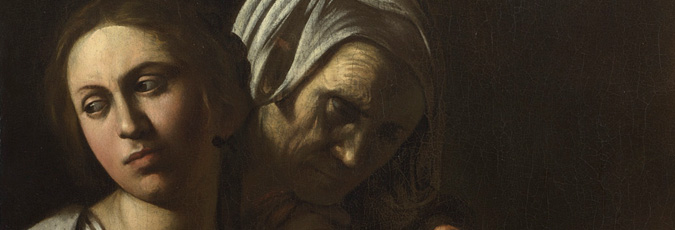Painting in Naples
Caravaggio visited Naples twice: in 1606/7, when he fled Rome after the murder of Ranuccio Tomassoni, and again in 1609/10, following an extended stay on the islands of Malta and Sicily. The Kingdom of Naples was then part of the Spanish Empire and the city itself, with its bustling commerce and dynamic cultural scene, was home to many artists from Spain, like Jusepe de Ribera. Neapolitan artists frequently travelled to Rome – both Ribera and Mattia Preti spent their formative years there – and would already have known Caravaggio’s paintings. However, it was the art that Caravaggio produced in Naples that had the most enduring influence on painters there, most famously his ‘The Seven Acts of Mercy’ (1606–7).
In his mature works Caravaggio abandoned the descriptive technique and broader tonal range of his Roman years in favour of a looser, more summary handling of paint. The greater emphasis on exaggerated gesture and forceful lighting was well-suited to religious subjects, where a picture’s emotional intensity could perfectly match its visual potency.

